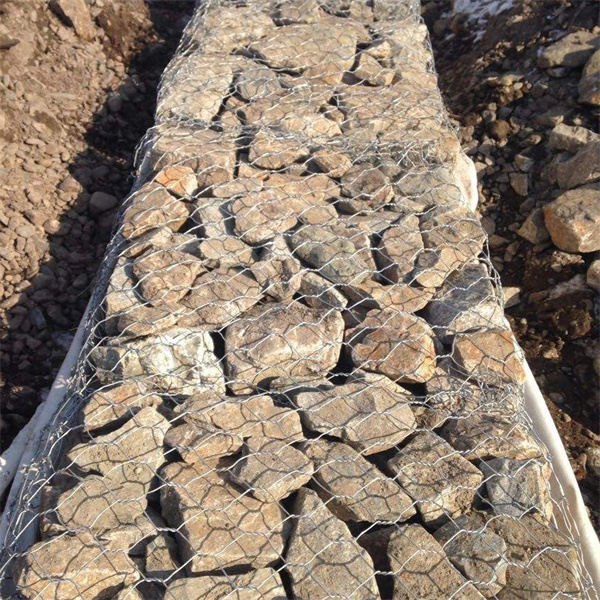دېكابىر . 10, 2024 13:09 Back to list
gabion stand
Understanding Gabion Stands A Practical Guide
In the realm of construction and civil engineering, materials that offer both functionality and aesthetic appeal are highly sought after. One such material is the gabion, a term derived from the Italian word gabbione meaning big cage. Gabions have gained immense popularity for various applications, including retaining walls, erosion control, and decorative landscaping. This article delves into the essential aspects of gabion stands, their construction, benefits, and various applications.
What Are Gabion Stands?
Gabion stands consist of wire mesh cages filled with materials such as rocks, gravel, or soil. These structures can be designed in various shapes and sizes, depending on their intended use. While traditional gabions are often used as retaining walls or barriers, gabion stands can serve multiple functions, from structural supports to decorative features in gardens or public spaces.
Construction of Gabion Stands
The construction of gabion stands is relatively straightforward. The first step involves selecting the right materials for both the wire mesh and the fill. Generally, galvanized or stainless steel wire is used to prevent rusting and corrosion, ensuring longevity. The fill material can vary, but it is typically non-erodible, such as granite, limestone, or river rock, which offers both functional strength and an attractive appearance.
The next phase involves shaping the wire mesh into the desired configuration and securely tying it together. Once the structure is in place, it is filled with the chosen material, compacting it as necessary to achieve stability. The filled gabion is then usually placed on a solid base to ensure that it can withstand environmental stresses, such as soil movement or water erosion.
Benefits of Gabion Stands
1. Durability Gabion stands are highly durable and can withstand severe weather conditions. The use of metal wire mesh helps prevent deterioration, making them a long-lasting choice for various applications.
2. Eco-Friendly As gabion stands can be filled with natural stones or recycled materials, they are an environmentally friendly alternative to traditional concrete barriers. They allow for water drainage, reducing the risk of flooding and promoting the natural movement of ecosystems.
3. Aesthetic Appeal Available in different shapes and sizes, gabion stands can enhance the visual appeal of any landscape. They can be integrated into gardens, parks, or architectural designs as striking features that blend with the natural surroundings.
gabion stand

4. Ease of Installation Compared to conventional building materials, gabion stands are relatively easy to install and require minimal equipment. This aspect can save both time and labor costs for construction projects.
5. Versatility Gabion stands can be used in diverse applications, such as erosion control, sound barriers, garden walls, or even as seating areas in parks. Their adaptability makes them suitable for various projects.
Applications of Gabion Stands
Gabion stands can be employed in several settings
- Erosion Control By arranging gabions along riverbanks or slopes, they can effectively prevent soil erosion and stabilize land.
- Retaining Walls They provide excellent support for earth retention, allowing for the construction of terraces or level areas in hilly terrains.
- Sustainable Architecture As architectural elements, gabion stands can be incorporated into modern designs, offering both beauty and functionality as walls, fences, or decorative features.
- Public Spaces and Parks In public parks, gabion benches can serve as seating areas while adding to the natural beauty of the landscape.
Conclusion
Gabion stands represent a convergence of utility, aesthetics, and sustainability in construction. Their durability, eco-friendliness, and versatility make them an excellent choice for various applications. Whether used for structural support, landscape design, or erosion control, gabion stands showcase the innovative potential of modern construction practices. As we continue to seek out more sustainable building solutions, the use of gabion stands is likely to become even more prevalent in both public and private projects. Understanding the fundamentals of gabion construction allows architects, engineers, and homeowners alike to harness the advantages of this unique material effectively.
-
Visualizing Gabion 3D Integration in Urban Landscapes with Rendering
NewsJul.23,2025
-
The Design and Sustainability of Gabion Wire Mesh Panels
NewsJul.23,2025
-
The Acoustic Performance of Gabion Sound Barriers in Urban Environments
NewsJul.23,2025
-
Mastering the Installation of Galvanized Gabion Structures
NewsJul.23,2025
-
Gabion Boxes: Pioneering Sustainable Infrastructure Across the Globe
NewsJul.23,2025
-
Custom PVC Coated Gabion Boxes for Aesthetic Excellence
NewsJul.23,2025
-
Installation Tips for Gabion Wire Baskets in Erosion Control Projects
NewsJul.21,2025






